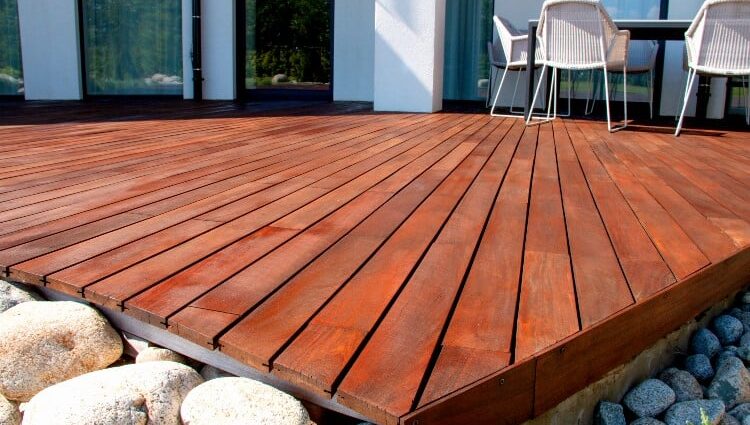Ipe is a kind of wood from the tropics that many people are starting to use for making outside decks. Usually called the Brazilian walnut, ipe wood is well-known for being very strong and hard to scratch.
Durability
Ipe’s dense structure and high natural oil content enable it to resist rot, decay, insects, fungi, and weathering exceptionally well. It allows ipe to hold up very well to foot traffic and furniture dragging over time with minimal denting or scratching. Independent testing shows that when properly installed and cared for, an ipe wood deck can be expected to last longer even in harsh climates. The durability translates to very low long-term maintenance requirements.
Slip resistance
With the grain running parallel to the deck surface for maximum durability, ipe has a moderately coarse texture that provides good grip for shoes in both wet and dry conditions. Its natural grain patterns provide airflow channels across the wood surface as well, allowing water to drain more readily after rain.
Cost considerations
Due to its durability, strength, and scarcity, ipe lumber demands a premium price. Installation costs tend to run -15 per square foot, 2 to 3 times more than typical pressure-treated pine decks. The extreme durability leads to very low long-term maintenance costs, however, allowing the deck’s return on investment to rise over time. Ipe’s longevity also minimizes environmental impact compared to cheaper deck woods that need periodic replacing. Consumers wanting ipe’s exotic look without its price tag often opt for high-quality composite ipe decking Florida instead.
Maintenance requirements
Annual cleaning with a composite deck cleaner and protectant keeps ipe looking its best at a low cost per year. No cracking, splintering, or surface damage ordinarily occurs, eliminating most repair costs over decades of use. Ipe grays naturally to an elegant silver tone over 1-2 years but retains its durability and can be restored to its original rich brown by sanding/resurfacing if desired.
Sustainability and green building credits
As a certified exotic tropical hardwood, ipe used for decking is selectively harvested from naturally fallen trees rather than actively cut. Its extreme durability and density also enable manufacturers to use thinner boards on steel framing, reducing usage of both ipe and other structural woods per square foot. Conscientious consumers should verify responsible harvesting practices are used by any ipe decking supplier, however.
End
With proper installation and basic annual upkeep, a professionally-built ipe wood deck can be expected to provide exceptional performance and aesthetics for potentially over 40 years. Ipe resists weathering, flaking, rotting, warping, cupping, slipping, and splintering for decades while retaining its strength and gorgeous exotic wood grain patterns.

